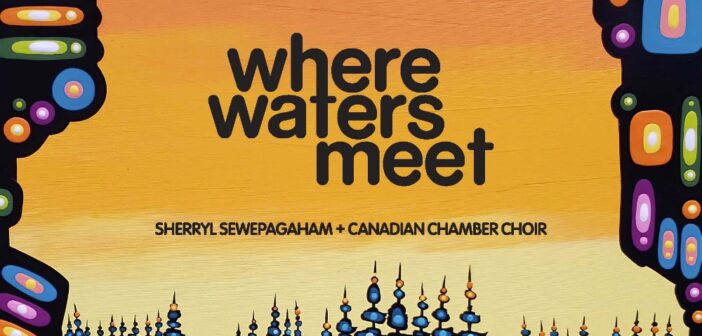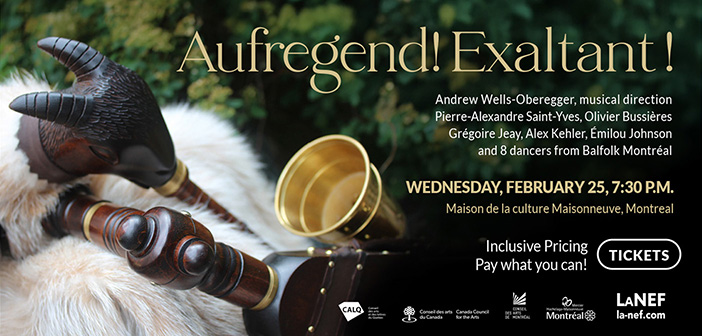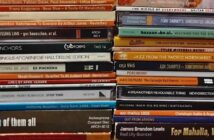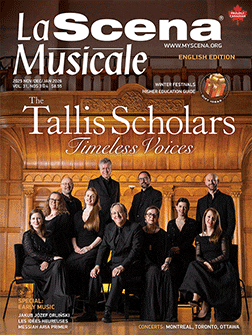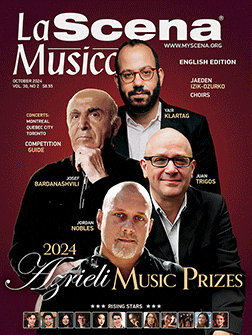
This page is also available in / Cette page est également disponible en:
Français (French)
-
Independent release4
Where Waters Meet
Canadian Chamber Choir
Independent release, 2024
Where Waters Meet is the most recent CD from the Canadian Chamber Choir. It’s the culmination of a number of exploratory Indigenous/settler initiatives exploring our relationship to water in music and song. At the heart of the record is the five-movement work by Carmen Braden that gives the album its title. This piece deals very directly with water as a source of life and, tragically, due to settler indifference, death and disease for many communities. It’s most explicit in the third movement that sets a Toronto Star article on water advisories (based on a report entitled Disrespected, violated, contaminated which really says it all) but it’s most effective in the two movements that set evocative poetry by Yolanda Bonnell.
Braden’s piece is fairly varied musically for an unaccompanied choral work. The Toronto Star passage, for instance, is set as very close to speech, with some more pointed interjections of action words, but gets a repeat where the vocal line effectively mimics running water. There’s enough use of extended vocal technique and some quite surprising dynamics to maintain interest. Inevitably it feels a bit didactic, but the musical variations and Bonnell’s poetry stop it from feeling preachy.
The movements of Braden’s Where Waters Meet are split up by short pieces composed by Sherryl Sewepagaham setting Cree texts. She sings these in a (as far as I can tell) traditional style, accompanying herself with drum or rattle. The album is bookended by two other pieces by Sewepagaham. The first is in the same traditional style invoking the sun and the land. In a sense it serves as a kind of “life acknowledgement” for the album. T
his is followed by an intriguing piece, Sun on Water, by Hussein Janmohamed. It takes texts from the Hindu, Indic Ismaili and Christian traditions as well as Cree text by Sewepagaham and sets them as a kind of rattle and drum accompanied polyphony that builds to a climax that is almost a primal scream.
A final Sewepagaham piece closes out the disc. It’s called Nipīy (Water Song) and is a sort of elegy for water for choir and drum. It makes a fitting end to an interesting album which raises important issues in a pointed but non-confrontational manner.
The performances throughout are excellent, with the choir showing considerable versatility contrasted by idiomatic singing and drumming from Sewepagaham. The recording, made at the Isabel Bader Centre for the Performing Arts in Kingston last year, has a slightly churchy acoustic that suits the music but doesn’t in any way obscure the texts. The album is available as a physical CD and digitally, including in a 96kHz/24bit version (reviewed). There’s an excellent booklet with background material, all the texts and some cool artwork.
This page is also available in / Cette page est également disponible en:
Français (French)

